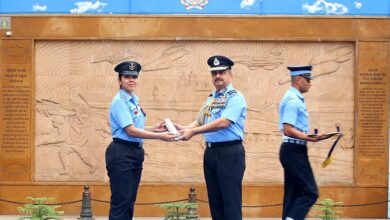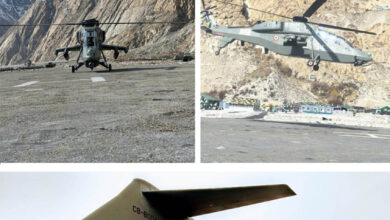India set to acquire precision bomb technology
Paris. Precision bombing with maximum impact and minimal collateral damage is the key to warfare now and later.
This is a requirement now from many angles, thanks to the emergence of urban terrorism from religious fanatics on a large scale all over the world.
While terrorists are legitimate targets, people near them are not. If they suffer in the process of attacks, many of them turn on the side of terrorists.
Legally, that also violates human rights, and today, no wing of the armed forces really wants to do that. Former Chief of Air Staff S P Tyagi is in fact on record as having said that the Indian Air Force’s entire effort is now focused on all-weather precision engagement wherever required, and to minimize any collateral damage if that has to happen at all.
His predecessor, Air Chief Marshal S Krishnaswamy, had also made similar observations.
It’s no surprise then that the staterun Ordnance Factory Board (OFB) is negotiating the acquisition of allweather precision bomb technology from US arms major Raytheon. Ben Ford, senior manager of Raytheon Missile Systems, told India Strategic at the Paris Air Show that Raytheon was in discussions with OFB to transfer the technology for the Enhanced Paveway-II Dual Mode GPS/Laser Guided Bombs for their indigenous manufacture in India.
The bombs will be used by the Indian Air Force (IAF) in a contingency.
Procedural clearance from the US government should be available, Ford added.
It may be noted that during the 1999 Kargil operation to evict the Pakistani troops from Indian territory, IAF had to import Israeli laser guidance kits and marry them with Indian-made bombs to attack the Pakistani positions. But India is still way off from self-reliance in this new but common technology.
Two aircraft had to be used, one to designate a target and the other to hit it. With the acquisition of the Paveway II technology, only one aircraft should be enough to hit a target, should a war erupt again. Initially developed in 1964, the Paveway is a standard US Air Force weapon with varying loads for attacking fixed or moving targets.
Thanks to its new Global Positioning System (GPS) and laser guidance capability, it can now be dropped exactly as required on a target with an error margin of less than four feet.
With both the GPS and Laser Guidance capability on the same bomb, the chances for collateral damage would also be minimal.
It can be programmed to aim at eight targets, but then attack the one designated by the pilot. Ford said that Raytheon had supplied some Paveway bombs to India about 10 years ago but now the discussions were about transfer of technology (TOT) “of this very potent weapon”. It can be launched from the Jaguar, Mirage 2000 or other IAF jets in any weather condition, and at day or night.
Raytheon had supplied more than 250,000 Paveway variants to the US and other countries and some 50,000 of these had used in battle, most recently in Iraq. The unique dual mode capability of the Paveway-II offered precision and flexibility “not available with any other system at present,” Ford pointed out.
Ford also said that the Paveway II had provision for “in-flight wind corrections” while there was scope for building additional data link capability.






